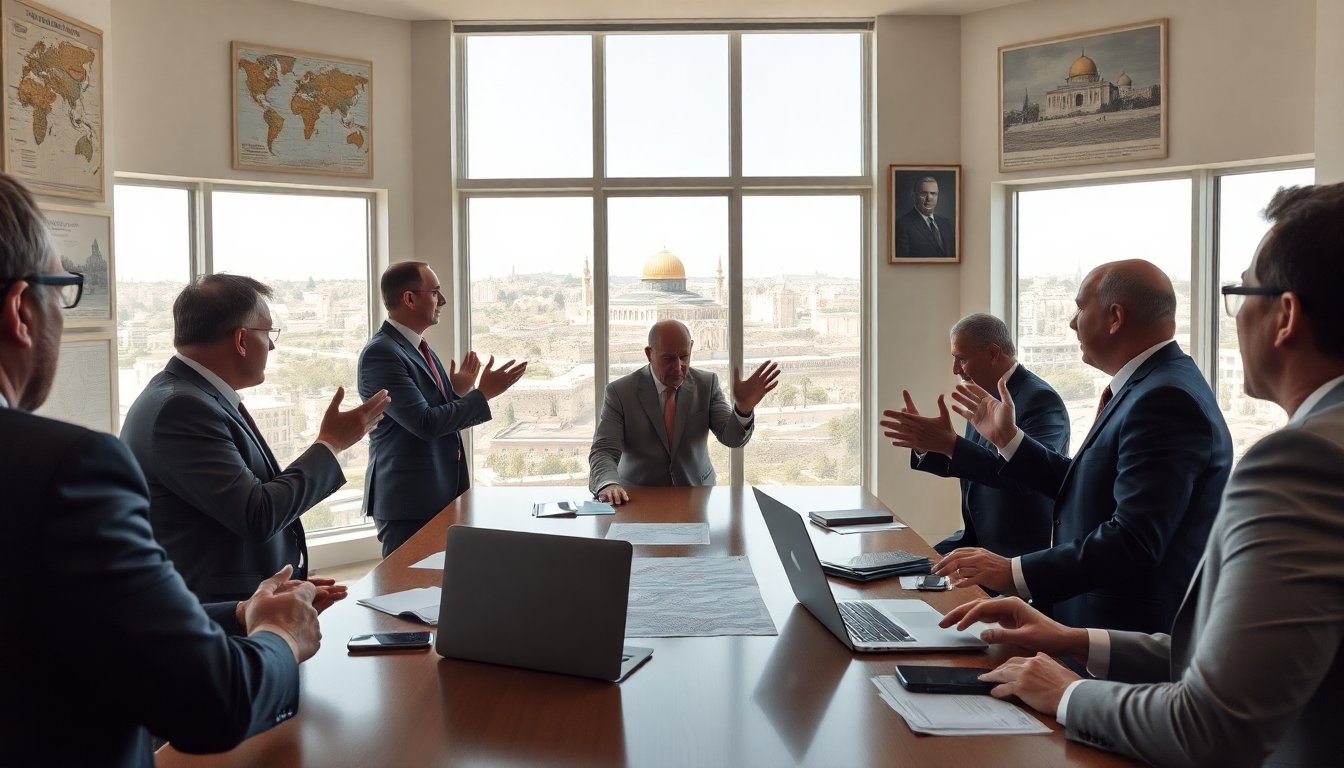Table of Contents
The situation in Gaza remains tense as U.S. officials intensify diplomatic efforts to prevent further escalation between Israel and Hamas. A ceasefire established on October 10, 2025, faces significant challenges that threaten this fragile peace. Senior envoys, including Jared Kushner and Steve Witkoff, are in Israel, working to ensure that the accord remains intact amid rising hostilities.
Over the weekend, violence surged once more, with Israel conducting airstrikes in response to an attack that claimed the lives of two Israeli soldiers. In a climate where accusations fly between both sides, the need for restraint and dialogue has become more critical than ever.
The facts
During the recent flare-up, local health officials reported that Israeli strikes led to at least 45 fatalities in Gaza. In a statement to the Knesset, Prime Minister Benjamin Netanyahu indicated that the Israeli military deployed nearly 169 tons of ordnance in response to perceived threats from Hamas operatives. Netanyahu emphasized the importance of Israel’s strength in making peace, stating, “One hand holds a weapon; the other reaches out for peace.” This reflects the ongoing struggle between military action and diplomatic resolution.
The consequences
The renewed violence has dire consequences for civilians in Gaza. Hospitals, already strained from previous conflicts, witnessed an influx of injured individuals. The Israeli Defense Forces (IDF) justified their actions by claiming they targeted Hamas members responsible for ceasefire breaches. However, the attack on a media center in central Gaza raised alarms about the safety of journalists, underscoring the precarious situation for those reporting from the region.
As the international community watches closely, the humanitarian crisis in Gaza becomes increasingly pressing. The United Nations and various aid organizations have repeatedly called for the opening of border crossings to facilitate the entry of essential supplies. Despite the framework of the U.S.-brokered peace plan, the reality on the ground reflects a stark contrast to the aspirations of increased humanitarian aid.
The role of U.S. diplomacy
U.S. President Donald Trump has made it clear that maintaining the ceasefire is a top priority for his administration. His recent statements express optimism regarding potential support from allied nations in the region to address the ongoing challenges posed by Hamas. Trump hinted at several Middle Eastern countries willing to intervene if Hamas continues to breach the ceasefire, although he did not specify which countries were involved.
Long-term strategy and challenges
A significant aspect of the ongoing negotiations centers around the disarmament of Hamas. Trump has articulated that a sustainable peace is contingent upon Hamas relinquishing its weapons; however, the group has linked disarmament to the establishment of a recognized Palestinian state. The complexities of these negotiations reflect deep-rooted historical conflicts and the necessity for a comprehensive approach to peace.
Vice President JD Vance, currently in Israel, echoed Trump’s sentiments, suggesting that an international force may need to be deployed to establish security infrastructure before any disarmament occurs. Vance’s remarks indicate a recognition of the intricate balance between military readiness and diplomatic engagement.
Amid these discussions, the fate of those missing or unaccounted for in the conflict remains a painful point of contention. Reports indicate that while Israel has returned numerous bodies of Palestinian captives, the plight of Israeli remains buried under rubble, complicating the humanitarian situation further.
In response to the escalating violence, the U.S. has established a Civilian Military Cooperation Center (CMCC) in Israel aimed at facilitating humanitarian aid delivery and reconstruction efforts. This center will serve as a hub for coordinating resources to support Gaza’s recovery, highlighting the critical role of international collaboration in navigating this complex conflict.


